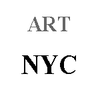Are the Tower of Babel and the Hanging Gardens a real civilization or a story created by human imagination?
Since ancient times, civilization has been created and developed around large rivers. The ancient civilization of Mesopotamia, which we know well, was designed around the Euphrates and Tigris rivers.
The Tower of Babel, recorded in character and depicted by artists such as Peter Bruegel, does not currently exist, so it has not been accurately revealed whether this existed or is a mysterious story passed down only by word of mouth. It is so interesting to dig into the mystery of this mystery, find evidence, and infer it.
Many people find the city of Babylon mysterious because it appears in the Bible. Although the city has existed in history with traces, the Bible's strong religious ideology paralyzes reason.
The Mesopotamians built a massive tower called the Ziggurat. They made bricks with baked soil and constructed by strengthening the adhesion with rice houses and mortar. Gypsum was also used for adhesion, and bitumen, a natural asphalt from petroleum, increased the waterproofing function. Surprisingly, this technology has been used since about 3000 B.C. The Bible described Babylon as an invader or a depiction in the eyes of the ancient Greeks. Babylon was a vast city with a population of over 35,000, had the technology to build massive structures, used letters, and had mighty power. Then, it invaded Jerusalem, took native Jews as prisoners, and brought them to Babylon. This is the primary source of Babylon.
Greek philosopher Herodotus described the Tower of Babel in his book History around 400 B.C. According to his description, in Babylon, men bought a woman as if she were auctioned off and made her their wife. It must have been a relatively unfamiliar landscape to the Greeks at the time. They worshiped a god named Marduk, shaped like a four-legged lion with the head of a dragon, the tail of a snake, and the skin. They held an event celebrating Marduk during New Year's Eve and Spring Equinox. Spring Equinox is precisely the same length of day and night.
The Tower of Babel existed. After his father Nabopolasar finished the hem, Nebuchadnezzar II, who ruled during Babylon's heyday, finished the work. The building will likely be square, with the same width and height as Brugel's painting, not circular. They recorded the techniques used in the construction of clay. Blue porcelain tiles were used as decorations for the building. Blue Lapis lazuli bricks are very valuable stones from Afghanistan.
Another mystery in Babylon is the Hanging Gardens, which the Greeks called the Seven Wonders of the World. The Babylon area had the Euphrates River, but it was a desert area, so it was difficult for life to grow without drawing water. The aerial garden of Babylon was on high ground, very colorful enough to feel like a paradise on earth, overflowing with fountains, water, and abundant trees. Despite the disagreement, the prevailing opinion is that it was in the Nineveh region. The clay tablets stored in the British Museum describe how they created the water channel and used the water. They used a screw pump to pull up the water and let it flow down from the top to supply water to the plants on the hill. It is known as the invention of Archimedes, but the Babylonians used it even before Archimedes invented it.
The great city of Babylon was destroyed in 539 B.C. when Persian Wankyrus conquered it and disappeared into history.


![[100 Challenge] Song E Yoon_10](http://artnycnewyork.com/cdn/shop/articles/IMG_4908_1100x.jpg?v=1737345511)